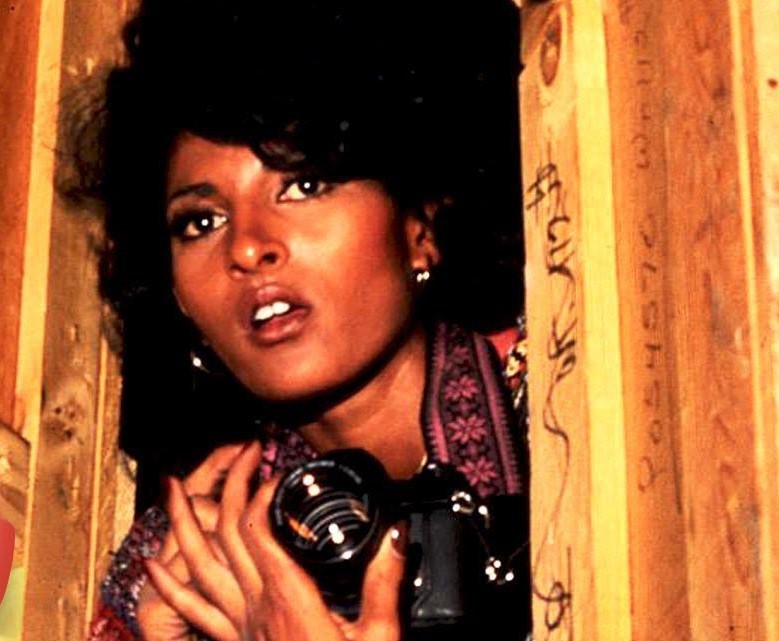Starring: Pam Grier, Yaphet Kotto, Paul Benjamin and Eartha Kitt
Rated: R Action/Mystery
Friday Foster (Pam Grier) is a photographer for Glance, an urban magazine run by Monk Riley (Julius Harris). On New Year’s Eve, Monk gets a tip that Black billionaire, Blake Tarr (Thalmus Rasulala), was covertly arriving in Washington, D.C. for a secret meeting. After attempting to get in touch with his primary photographer, Shawn North (Stan Stratton), Monk reluctantly calls Friday. Knowing her propensity for becoming involved in situations that she should not, Monk warns Friday to simply just take pictures.
Rushing to go to her assignment, Friday has to cancel attending the holiday party of her close friend, Cloris Boston (Rosalind Miles); both women used to model for couture designer, Madame Rena (Eartha Kitt). The cancellation by Friday is distressing to Cloris, who is desperate to speak with her.
When Friday gains access to the private hangar to take photographs of Tarr, there is an assassination attempt made on his life. After taking pictures of the attempt, she inadvertently bumps into the lead henchman, Yarbro (Carl Weathers); she, unknowingly, has captured him on film.
Upon meeting with Monk and Shawn, she decides to investigate who would want to kill Blake Tarr and the reason(s) behind it. As the bodies begin to pile up, Friday realized that her life is endangered. Determined to solve the mystery, which is becoming more complex and involved, Friday presses forward. Adding to the intrigue is a senator, David Lee Hart (Paul Benjamin); his aide, Charles Foley (Jason Bernard); fashion designer Ford Malott (Godfrey Cambridge) and mega-preacher, Rev. Noble Franklin (Scatman Crothers).
With the support of a frustrated Monk; a jaded lieutenant, Jake Wayne (Edmund Cambridge); and private investigator, Colt Hawkins (Yaphet Kotto), will Friday be able to solve the truth in time? Viewers definitely want to know!
Friday Foster, the final film of American International Pictures in which Pam Grier would act, did well at the box office. The film was different from Grier’s previous ones, significantly Foxy Brown and Coffy, in that she was better able to control her image. This autonomy would extend to her performing less in both nude and sexual scenes. The irony to this development was that Grier felt she had to take those prior film roles, as they were the only available roles for Black actresses, in order to not be further exploited.
Also of significance in the film is the degree of success that many African-Americans portrayed. The negative stereotypes of urban life, such as a pimp, Fancy (Ted Lange), are more limited. Although the success is primarily seen in the roles of Black men, i.e. business (Tarr and Riley), politics (Hart), religion (Franklin) and law (Hawkins), Friday and Madame Rena are examples of Black women who enjoy prosperity in fields, journalism and fashion, respectively, that had previously excluded them.
Friday Foster is based on the comic strip that was created by Jim Lawrence, who is probably best known for his creation, The Hardy Boys. Inspired by Black model Donyale Luna and bewildered that there was no comic strip that featured a Black lead, Lawrence began developing a new character and backstory in 1968. He decided his strip would be about a Black careerwoman in New York City. The Chicago Tribune-New York News syndicate wanted a fresh comic and had been excited by the popularity of the Black characters of their one-panel features.
It was primarily illustrated by Jorge Longarón of Spain (in its final year, Howard Chaykin and Dick Giordano worked on it). “Friday Foster”, which ran from January 1970 to February 1974, was the first mainstream syndicated comic strip to star a Black woman.
Like in the film, the lead character, Friday Foster had worked as a photographer and as a model. However, unlike the film, Friday lived in Harlem and had a troubled life before becoming involved in her careers. As comic historian Dave Karlen noted in his Dave Karlen Original Art Blog article, “Buried Treasure: Lawrence & Longarón’s Friday Foster”, the character originally worked as an assistant photographer to Shawn North, who was a high-fashion photographer.
Friday would work her way from behind the lens to in front of it, rising to become a prominent, international model. In her global travels, Lawrence further developed Friday to become involved in drama, mystery and love. As Karlen reflected in his essay, “Early on, Lawrence’s story lines had a harder edge showing the contrast of Friday’s family with her street-wise brother, trying to accept her newfound success in the world of magazine publishing. But soon its episodes changed focus to showcase more soap-opera thrills of romance and travel for the gorgeous African-American. Hong Kong, Paris, London, and even Africa were all shown with equal flair from the detailed artistic masterpieces produced by Longarón from his home in Barcelona.”
In 1972, Dell Comics published the only issue, #1, of Friday Foster comic book. According to the Museum of Uncut Funk, it has acquired the merchandise rights for “Friday Foster” comic strip and comic book. They also intend to release new merchandise based on the character. In 2009, Robert Tonner created five different versions of a doll, Friday Foster, and she is represented in the hip dress of the 1970s.
In September, 2019, Friday Foster was featured in a Minit Mystery edition of “Dick Tracy”. In the story, Friday is working as a photographer on a shoot in The City, where Dick Tracy lives. When one of her models is murdered, similar to part of the film, Friday Foster, Tracy is assigned to solve the case.

